The Nuclear Option: Eaton Vance's John Shea
John Shea sits down with Jake Thomases to discuss his interesting pre-Wall Street career and Eaton Vance's IT.
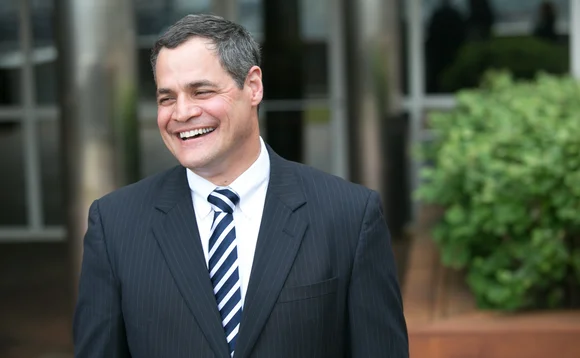
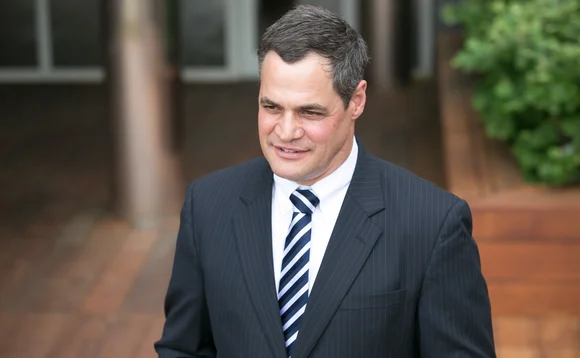
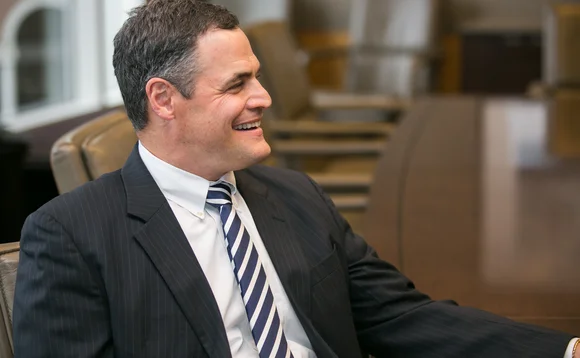
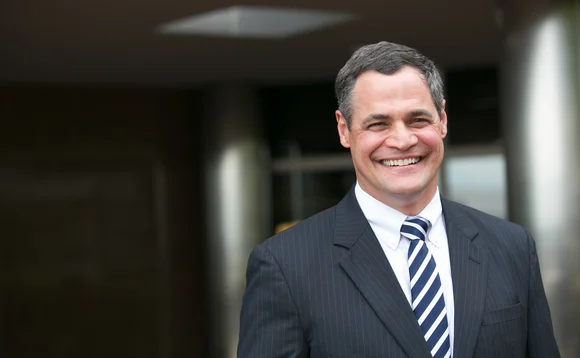
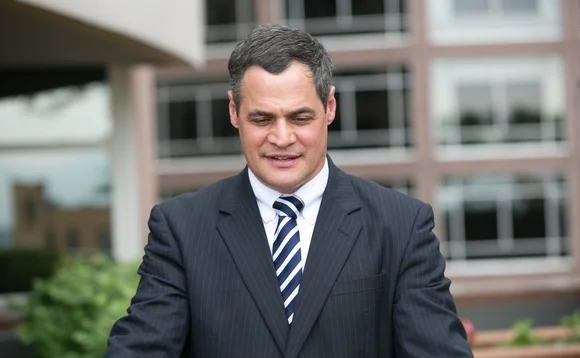
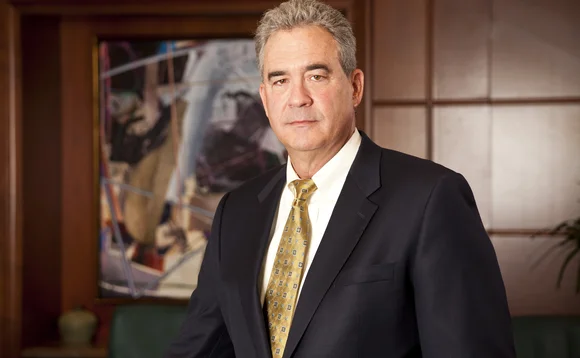

“John,” said his new bosses, “we’re bringing you on because we know you can take our IT organization to the next level. We expect you to keep Eaton Vance on the cutting edge. The world is your oyster. So, what’ll it be? What flashy new system will you be installing first?”
“A time-tracking system,” he answered.
“Time tracking? You mean the software that monitors application usage and productivity in employees? The one used by companies in all kinds of sectors that have nothing to do with financial services? That you can get online for $20 a month? That time-tracking software?”
“Yes. That one.”
Of all the ways to flex his IT muscles, John Shea began his CIO career at Eaton Vance with a pretty basic piece of technology. Not because he thought it would shake up Eaton Vance’s place in the market. He just wanted to know what everyone in the department was working on. Because, frankly, he thought they should be working on fewer things.
“Just showing up to work every day you’ve got a lot of responsibilities because you’re operating a submarine that everyone’s lives are dependent upon—not to mention the missions you’re supposed to conduct. And, you know, there are no windows.”
Shea is a minimalist when it comes to buildouts. If a project isn’t within the core competency of the $260 billion asset manager, he wants no part of it. Eaton Vance may be one of the oldest money managers in the US, but it didn’t need a technology closet worthy of an aging hoarder. When he took over in 2006, Shea suspected the IT team had stuffed a few too many items into the agenda.
“People were building little one-offs for business units,” he says. “We had a ton of home-grown apps that were developed to support certain lines of business. I came in and said, ‘Listen, you want to be an app developer? Go work for Google. This is an asset manager.’ It was a bit of a mentality change. Some people thought the sky was falling.”
It would be logical to interpret that move as a rigid stance by a rigid man. Shea spent a decade as an active-duty naval officer. During the Gulf War he was third in command of a nuclear submarine, where the lives of the crew depended on everybody doing their job.
Mistakes? Not tolerated. Guff? Not taken.
You wouldn’t expect such a hard man’s communication style to be described as “a little bit folksy” by his former boss. Of all the ways in which his military career informs his corporate career, Shea actually places communication skills at the top of the list. A few minutes with him reveals a far more easygoing man than his background implies. His stance on outsourcing is borne of practicality, not punishment. He is not, it seems, full of starch at all. He even takes a little guff now and then.
A Navy Nuke
The blue-collar son of a truck driver and a retail clerk from Quincy, Massachusetts, Shea became attached to gadgetry at an early age. In 1982, he saved up for a $99 Timex Sinclair computer—it used a cassette tape for memory—and a nine-inch, black-and-white television. He opened them up, altered their guts, and connected them to make a digital clock. In the late 1980s, he built, out of mail-order parts, dozens of PCs for friends and coworkers, just for fun.
A Reserve Officers’ Training Corps (ROTC) scholarship granted him a full ride to Maine Maritime Academy, beginning his naval career. While in school, his scores in math and physics exams qualified him for the submarine program, even though he’d never seen a sub before.
The nuclear sub program was essentially a graduate program for nuclear engineering. Six months of classes were followed by six months learning to operate a real nuclear plant. After sub training, he was installed as one of 120 men operating a navy sub in Hawaii, performing Cold War operations. During Operation Desert Storm, he became the number three man on the USS Groton. As a combat systems officer on the Groton, he was in charge of the sonar, fire control, and torpedo divisions.
“It’s different in a sub, let me tell you,” he says. “You’re with a very highly trained, highly focused group of individuals with a very focused mission. Just showing up to work every day, you’ve got a lot of responsibilities because you’re operating a submarine that everyone’s lives are dependent upon—not to mention the missions you’re supposed to conduct,” Shea says.
“And, you know, there are no windows.”
Combat operations ended in 1991, leaving him at a crossroads. Ten years in the service had brought him halfway to a pension. Both his parents had served during World War II—his mother as a petty officer in the Navy Waves women’s division, his father as a mechanic and gunner in the Army Air Corps—and instilled in him a duty to country. But his long deployments—20 months at sea at one point—were taking him away from his three children. During one week-long shore leave, his wife gave birth on a Monday, they adopted a four-year-old girl on a Friday, and he shipped out again the next Monday.
With the Cold War and Gulf War over, he could leave the navy without guilt. He did agree to stay as a reservist, a position he abdicated only this May after 30 years.
Forging into the civilian world, he took a job as a nuclear plant engineer with Massachusetts consulting firm Engineering Planning and Management. At his first project, at a plant in Huntsville, Alabama, he noticed a dozen engineers doing setpoint analysis by longhand and convinced his boss to let him create setpoint software with a small group of coworkers. It was effectively his introduction into major software development.
Less than a year later, he struck out on his own, co-founding a company called EA Systems that built software for nuclear plant configuration and management. From there it was on to Massachusetts Financial Services (MFS) as a contractor doing land administration. After debating another startup, he opted to accept a permanent position at the Boston-based asset manager.
His career began to fast track when Peter Noll was brought in as CIO. Shea, buried at a lower rung of the organization, immediately grabbed Noll’s attention with his technical depth, attention to detail, ability to work with all types of personalities, and his instincts. Noll, who prides himself on grooming future CIOs, gave Shea responsibility for three groups in succession: infrastructure, development, and architecture.
“John’s leadership style is one where people have a tendency to naturally follow,” Noll says. “Even if he is not in a position of power per se, his personality is one where people tend to follow him anyway. Some wait to be given the authority to lead, others just lead.”
Soon he was Noll’s right-hand man. When Noll left in 2004, along with a number of other executives at the mutual fund giant following a market timing scandal, Shea was named acting CIO. His big break didn’t last long. A sickness in the family and ongoing turmoil at MFS convinced him to step down without another job. He and Noll put 600 miles on Noll’s sailboat that summer, until he was offered the CIO job at Batterymarch Financial, a small quant-focused subsidiary of Legg Mason. With its team of only a dozen IT pros, it was the perfect training ground for Eaton Vance, where he went two years later.
Eaton Vance
Traditionally known as a mutual fund company, with a history that traces back to the first open-end mutual fund in 1924, Eaton Vance made a push for institutional investors in the 2000s. Shea was brought in to usher the Boston company into its next phase. He kicked that phase off with his simple request for time tracking. Three months in, he had enough data to draw conclusions. The firm was an equity specialist, but its people were spending a tiny amount of time on equity projects and something like 80 percent of their time on emerging businesses with no realized profit. That changed in a hurry.
He also noticed a significant amount of time wasted on break/fix, and poured additional resources into shoring up the components that were always breaking. The biggest culprit, data movement technology, was being managed separately by each person, so he established a single data movement methodology. There were disparate project management methodologies, so he centralized that too. He went so far as to personally review people’s coding to figure out their habits.
“I’ve always used the infrastructure area of IT as a utility. I want the plug to work. I don’t care how the electricity is generated,” says Ted Giese, Eaton Vance’s director of investment systems. “John understands how the electricity is generated. His ability to do a deep dive into any problem that the infrastructure group has, I haven’t seen anything like it. If he was pressed, he could describe the trajectory of the atoms.”
No one has ever accused the corporate world of being too casual, but compared to the military, a board room meeting can seem like a scene from Animal House. Yet Shea insists that the difference isn’t that stark. He didn’t tell people to jump in his submarine, and nobody asked how high. There were egos to massage, motivations to probe, carrots and sticks to dangle. His career at Eaton Vance started with disruption, but he knew enough to not barge in like George Patton. Most of the developers to whom he gave the Google speech ended up staying on and working for him.
Eaton Vance had 40 independent sales systems when he arrived. He created a centralized transaction capture system and reduced the number of systems that support sales down to four. All four talk to each other, and through that ability, the transaction capture system generates a daily all-channel sales report on which the chairman can see all assets coming in and out of the firm. Shea says his is the only company producing such a report.
Eaton Vance changed offices in 2009, to a business tower overlooking Boston Harbor, giving him a chance to rebuild the IT infrastructure from scratch, including the on-site datacenter.
Philosophies
Today, his team of 140 has its hands in four simultaneous projects, including a system to actively manage exchange-traded funds. They’re also building centralized transaction management, compliance, and research functions in their investment systems. Trading desks will still be able to do portfolio analytics, trading, and modeling on whatever trading system they want, but the firm will be able to view their activity in aggregate.
He and his former boss Noll share a desire to be a “fast follower.” They are rarely the early adopters of new technology, instead letting others blaze the trail. As soon as those people prove the value of the investment, Shea jumps on it. Everything else, he outsources.
He’d like to see the financial industry do more work around big data, and less around cloud. Big data isn’t understood nearly enough, he says, especially the “data scientist layer” in which the data is filtered, normalized, and analyzed with mathematical models. In six or seven years, he thinks big data could change the fundamentals of how business is done—for example, by isolating productivity to a degree that employees will be paid for creating a certain number of “value units,” whether that takes them four hours or 11.
Cloud adoption, on the other hand, is moving too fast. The issues around protecting customer data have not been solved nearly to his satisfaction.
“Anything we’re doing on the internet now is more vulnerable than it was five years ago because of advanced persistent threats,” he says. “You have nations—China, Russia—where they have labs that look at the vulnerabilities in our operating systems before the patches can happen. When I started here, I pretty much had three main lines of defense. I had a firewall, I had antivirus on the desktop, and I had intrusion detection. I have 14 methods of defense now. You want to be real careful where you put your data now. On the other hand, I trust State Street. I trust Bank of New York. I trust Bloomberg. I trust FactSet. For all intents and purposes, that’s Eaton Vance’s core assets and data in the cloud. Amazon? Rackspace? Maybe not. It’s a constant management exercise.”
Perhaps his biggest upcoming project is finding a new boat to replace the 25-foot Stingray he sold recently. No Navy captain should be without the sea for too long.
JOHN SHEA FUNDAMENTAL DATA
Name: John Shea
Title: CIO, Eaton Vance
Tenure: Seven years as CIO
Number of Staff: About 140
Education: Maine Maritime Academy, followed by nuclear sub training for the US Navy, serving as an officer on a nuclear submarine during Operation Desert Storm
Activities: Boating, watching the Boston Celtics basketball team
Family: Married with four kids
Only users who have a paid subscription or are part of a corporate subscription are able to print or copy content.
To access these options, along with all other subscription benefits, please contact info@waterstechnology.com or view our subscription options here: https://subscriptions.waterstechnology.com/subscribe
You are currently unable to print this content. Please contact info@waterstechnology.com to find out more.
You are currently unable to copy this content. Please contact info@waterstechnology.com to find out more.
Copyright Infopro Digital Limited. All rights reserved.
As outlined in our terms and conditions, https://www.infopro-digital.com/terms-and-conditions/subscriptions/ (point 2.4), printing is limited to a single copy.
If you would like to purchase additional rights please email info@waterstechnology.com
Copyright Infopro Digital Limited. All rights reserved.
You may share this content using our article tools. As outlined in our terms and conditions, https://www.infopro-digital.com/terms-and-conditions/subscriptions/ (clause 2.4), an Authorised User may only make one copy of the materials for their own personal use. You must also comply with the restrictions in clause 2.5.
If you would like to purchase additional rights please email info@waterstechnology.com
More on Emerging Technologies
The next phase of AI in capital markets: from generative to agentic
A look at some of the more interesting projects involving advanced forms of AI from the past year.
Market data costs defy cyclicality
Trading firms continue to grapple with escalating market data costs. Can innovative solutions and strategic approaches bring relief?
As trading firms embrace AI, so do hackers
According to a Google cybersecurity report, cybercriminals are turning to AI to sharpen their attacks.
AI & data enablement: A looming reality or pipe dream?
Waters Wrap: The promise of AI and agents is massive, and real-world success stories are trickling out. But Anthony notes that firms still need to be hyper-focused on getting the data foundation correct before adding layers.
Waters Wavelength Ep. 343: Broadridge’s Jason Birmingham
This week, Jason Birmingham of Broadridge talks with Tony about the importance of fundamentals as technology rapidly evolves.
Data standardization is the ‘trust accelerator’ for broader AI adoption
In this guest column, data product managers at Fitch Solutions explain AI’s impact on credit and investment risk management.
BNY inks AI deal with Google, Broadridge moves proxy voting to AWS, Expero delivers ICE market data, and more
The Waters Cooler: TSX Venture Exchange data hits the blockchain, SmartTrade acquires Kace, and garage doors link to cloud costs in this week’s news roundup.
Everyone wants to tokenize the assets. What about the data?
The IMD Wrap: With exchanges moving market data on-chain, Wei-Shen believes there’s a need to standardize licensing agreements.







